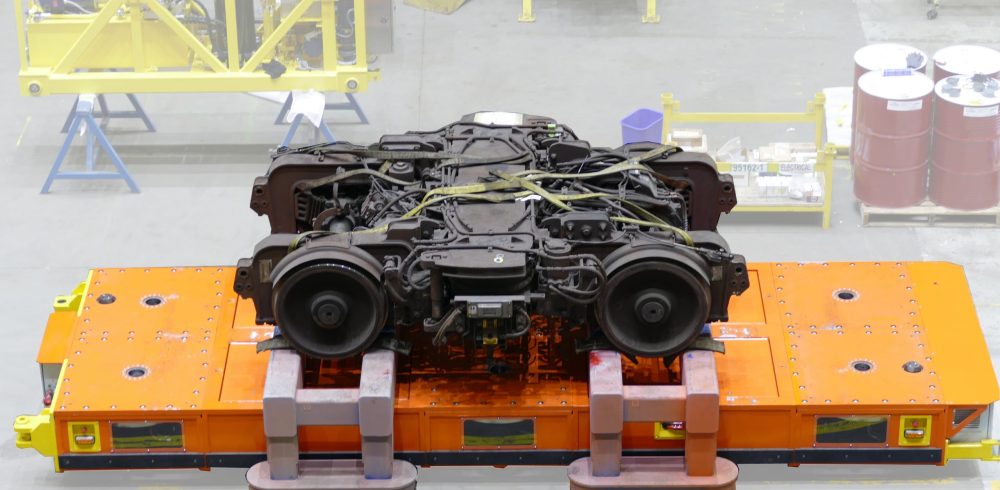Railway MGVs Support Maintenance Operations : Just because it’s made for the Rail industry doesn’t necessarily mean it has to run on rails. Manually guided vehicles as well as automatically guided vehicles are often found moving between tracks in order to move parts and product from one destination to the next. Of course, when paired with a maintenance system like a drop table or split-rail system, MGVs do run along a track under the locomotive or bogie in order to assist in truck and wheel servicing. An MGV can be equipped with an integrated lifting system that allows it to pick up bogies/trucks and other large subassemblies and move them through a variety of repair and overhaul operations. MGVs are designed to provide traditional forward, backward, reverse and turning capabilities as well as advanced zero-turning radius and crab positioning.
Automated guided vehicles & MGVs are usually custom-designed for the Rail industry to carry specific equipment, and handle different capacities which require custom tooling. The complexities behind maintaining rail cars require MGVs to simplify the processes both under the carriage and while moving parts along the lengthy distances which make up a rail maintenance facility.
Proven safe and effective, battery-operated MGVs streamline the work by contributing to an efficient workspace. The manually guided vehicle is feature-rich and designed for those who are focused on continuous improvement. Manually guided carts are engineered to allow the operator real-time maneuverability so they can crab around clutter in an assembly or maintenance facility while en route to their destination. As layouts change, a custom-designed manually guided cart offers a perfect solution to moving product and parts through an ever-evolving environment.
An MGV is the less costly version of the AGV. Another important aspect to the purchase of a manually guided vehicle is that it can be easily and affordably upgraded to act as an automatic guided vehicle. The perks to this upgrade offer increased efficiency where the automated cart will repeat a preprogrammed route including timed stops, and if the unit includes a lift, it will know at what height to raise or lower the object at different work cells. Fitted with multiple motion sensors, it will stop to avoid a collision should someone or something move in front of it.
Capable of working in virtually every industry, MGVs and AGVs have proven their worth time and again and continue to perform in applications where a versatile and smart-design make quick work of maintenance and assembly processes. Built to your specific needs, a robust guided vehicle will make the difference to your rail operation’s specific challenges.
Rail is a popular industry to utilize the efficiency of a manually guided vehicle, but it is far from the only MRO and assembly industry to boast an MGV. Heavy-duty guided vehicles are becoming more and more in demand as assembly and maintenance facilities continue to discover new benefits to automation. Aerospace, automotive, steel and food process industries and power generation manufacturers all find important uses for AGVs and MGVs within their factories and MRO facilities. More often than not, once an MGV or AGV has been employed, a company will order more units to keep downtime at a minimum and efficiency soaring.
____
Written by: Michael Poeltl, Marketing Manager, Handling Specialty Manufacturing Ltd
https://www.handling.com/all-solutions/agv-mgv-assembly-equipment
Manufacturing & Engineering Magazine | The Home of Manufacturing Industry News









